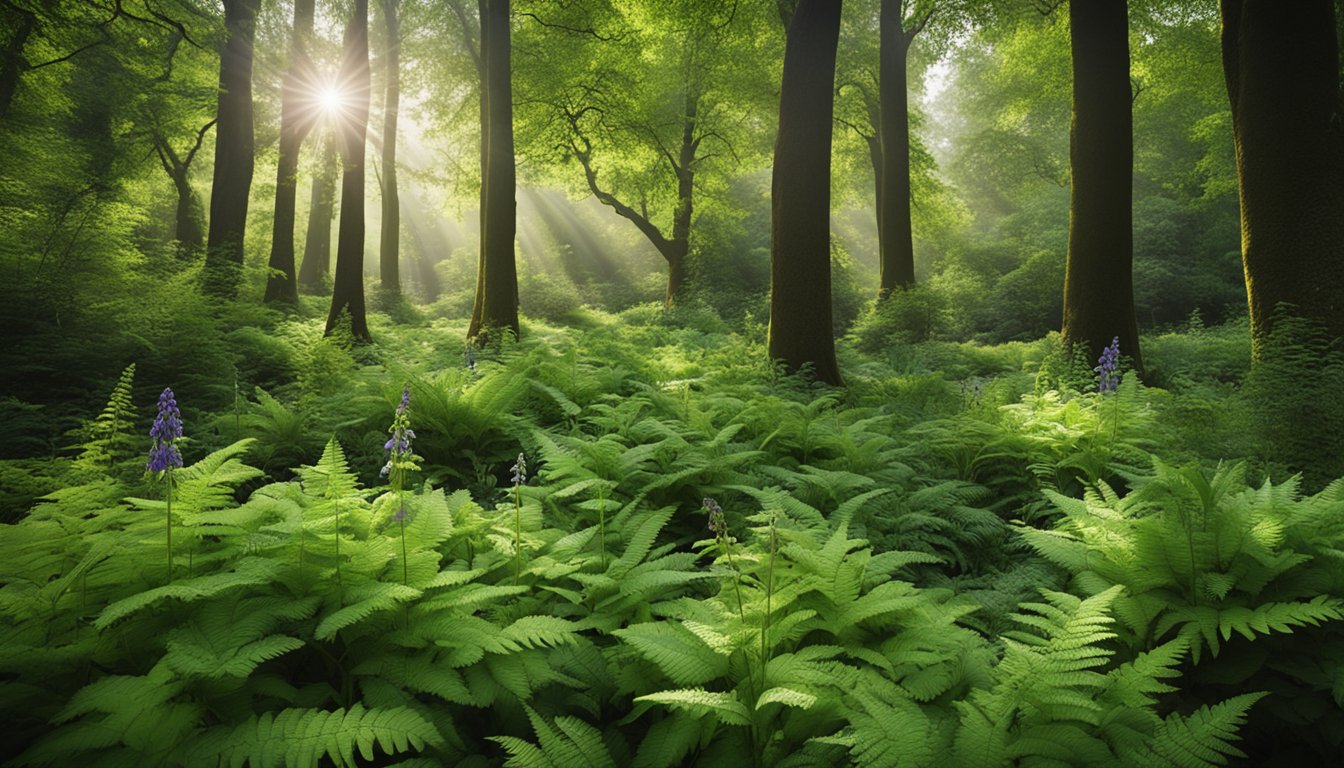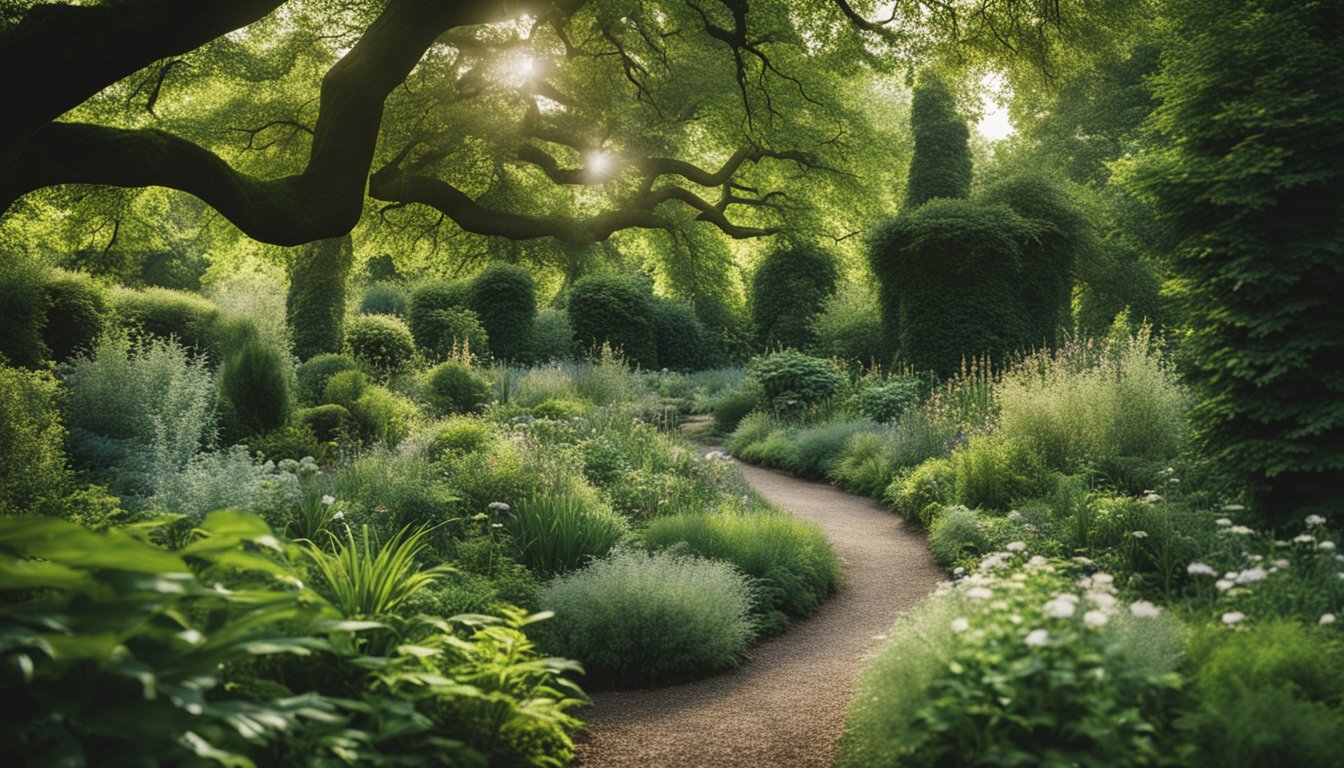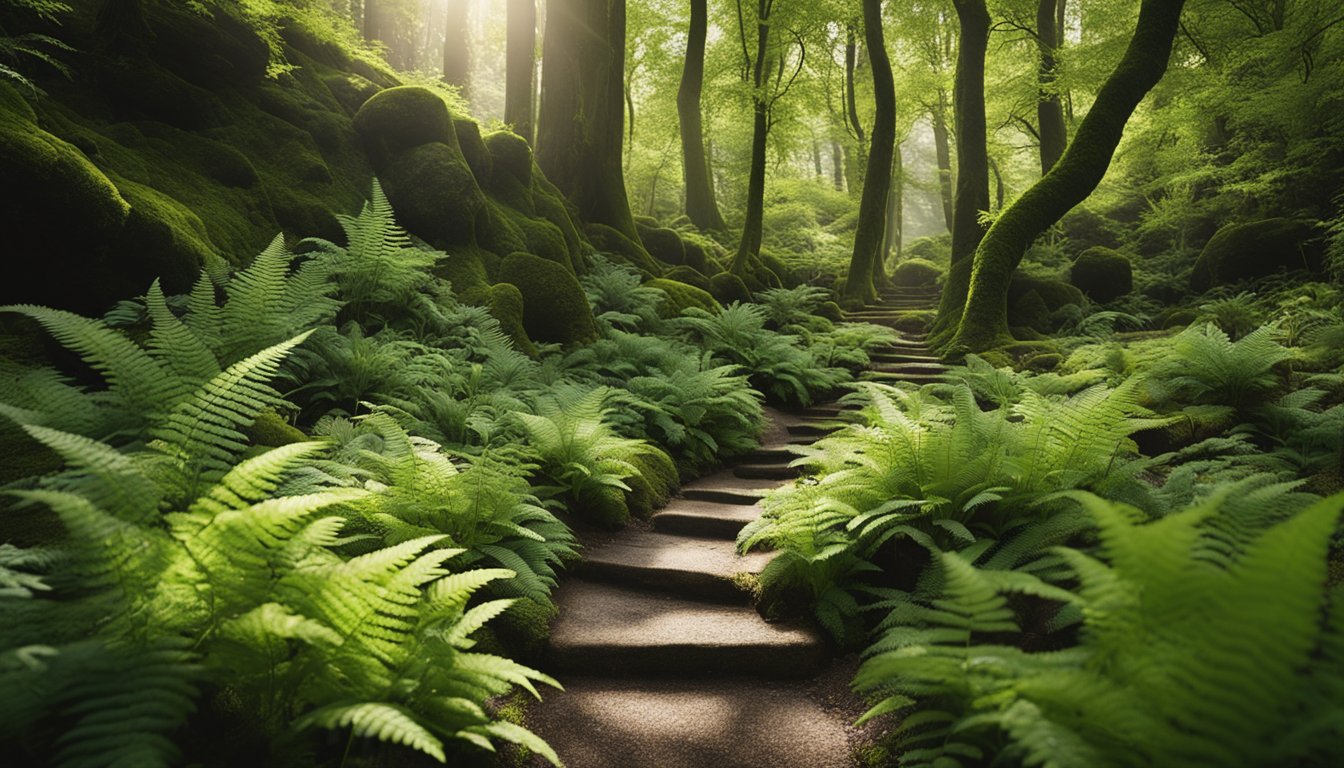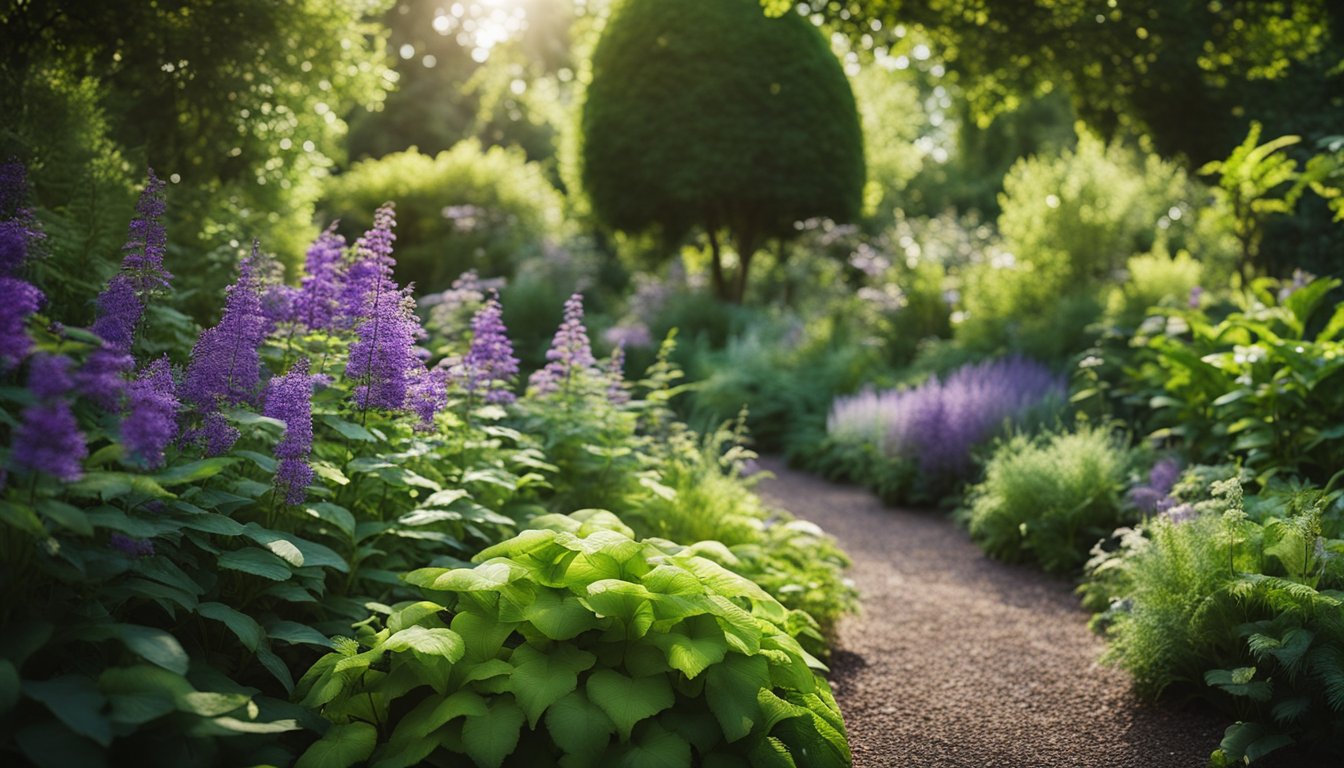Late updated: 12 Nov 2024 12:11
Written by: Emily Thornton
Best Native UK Plants For Shady Gardens: Top Picks for Your Green Space
Exploring the world of shady gardens in the UK, we find a wealth of native plants perfectly suited to these environments. The best native UK plants for shady gardens bring colour and texture, while enhancing the biodiversity of your outdoor spaces. From ferns to wildflowers, these plants thrive without direct sunlight, creating lush, beautiful landscapes.

Shade in our garden can be a challenge, yet it offers unique opportunities to encourage native plants that not only survive but flourish. Native plants are essential because they are well-adapted to local conditions, requiring less maintenance and supporting local wildlife. With the right selection, even the shadiest corners can become vibrant and biodiverse habitats.
Our goal is to share practical insights that inspire you to transform your shaded areas into thriving ecosystems. As we dive deeper into this topic, we'll reveal some of the best native plants that can effectively transform your shady spots. Embrace the opportunity to enrich your garden landscape and play a part in supporting native wildlife.
Key Takeaways
- Identify native plants that thrive in shade.
- Native plants support wildlife and biodiversity.
- Shades in gardens offer unique planting opportunities.
Understanding Shade in Garden Spaces

When planning a garden in shaded areas, recognising the nuances of shade is essential. Different types of shade and soil conditions can profoundly influence which plants will thrive.
Types of Shade and Their Impact on Plant Growth
We can classify shade into several types, each affecting plant growth uniquely. Partial shade provides sunlight for a few hours each day, usually morning or late afternoon, allowing a wider variety of plants to flourish. Dappled shade results from sunlight filtering through leaves, suitable for plants like ferns and woodland species. Light shade offers more ambient light, supporting plants requiring indirect sunlight.
Full shade receives the least direct sunlight, often under tree canopies or in the shadow of structures, limiting options to shade-tolerant species. Understanding these differences helps us select appropriate plants, ensuring they receive the required light levels. Each type of shade creates specific microclimates within a garden, influencing temperature and humidity, and thereby plant success.
Soil Conditions and Shade
Shade can significantly alter soil conditions, making it crucial to adapt our gardening practices. Damp shade often develops in areas with poor drainage, leading to soggy, compacted soils. Adding organic matter can improve drainage and aeration, benefiting plants reliant on moisture.
In contrast, dry shade can occur under large trees that absorb most surface moisture. Selecting drought-resistant, shade-loving plants can be vital here. Well-drained soil is important in shaded areas to prevent root rot, while humus-rich soil provides essential nutrients and improves water retention in shade. Evaluating and amending soil conditions ensures that plants receive adequate nutrition and structure for optimal growth.
Selecting Native Plants for Shady Areas

In shady gardens, choosing the right native plants can improve biodiversity, enhance aesthetic appeal, and support local wildlife. We'll explore flowering plants, shrubs, ferns, ground cover options, suitable trees, and how to create a wildlife-friendly garden.
Flowering Plants and Shrubs
Incorporating native flowering plants and shrubs can bring colour and life to shaded areas. Foxgloves and wood anemones thrive in partial shade, offering beautiful blooms. Plantain lilies (Hostas) are another shade-tolerant option with elegant foliage, although they need protection from slugs.
Shrubs like spicebush, thriving in varied light conditions, prefer moist, rich soil. Sweetshrub and Carolina allspice also fill shaded spaces effectively. For a pop of colour, consider red campion, adding both vibrancy and pollinator-friendly benefits.
Ferns, Ground Cover, and Climbers
Ferns are excellent for adding texture and lushness beneath trees or in dark corners. The male fern and lady fern are both hardy and adaptable, needing minimal light and care.
For ground cover, wild ginger provides dense growth and ensures soil stability. This can prevent erosion on slopes by establishing a thick carpet.
As for climbers, ivy is a versatile choice that emboldens walls and structures with greenery. Its evergreen nature provides continuous cover, attracting various bird species for habitat and nesting.
Trees and Hedges Suitable for Shade
Selecting the right trees and hedges can significantly impact a shady garden’s structure. Hawthorn (Crataegus monogyna) is a native hedge that tolerates shade and provides shelter for wildlife. It blooms in spring, followed by berries that sustain birds through winter.
Ilex aquifolium, or common holly, is another shade-tolerant option. This evergreen serves dual purposes — as an attractive border hedge and as an important resource for wildlife, offering flowers and berries across seasons.
With a mix of small native trees like rowan or even birch, one can enhance vertical interest while supporting local ecosystems.
Creating a Wildlife-Friendly Garden
Creating a habitat for wildlife involves careful plant selection and design. Incorporating pollen-rich wildflowers, like bluebells and primroses, ensures year-round nourishment for pollinators. Including native shrubs and trees provides nesting sites and shelters for a range of creatures.
Thoughtfully placed logs and stones create a variety of microhabitats, supporting insects and small mammals. Allowing portions of the garden to remain slightly wild encourages biodiversity.
When planting under trees, layering with different plant types helps mimic natural ecosystems, fostering a rich habitat for wildlife while adding visual depth and interest.
Frequently Asked Questions

In UK gardens, selecting native plants for shaded spots can transform these often overlooked areas. From perennials that thrive year-round to easy-to-care-for vegetables, these selections add beauty and practicality to any shaded garden space.
What perennial plants will thrive in shaded garden areas throughout the year?
In shaded garden areas, perennials like hostas, ferns, and heucheras flourish. These plants are ideal for providing continuous interest throughout the year. Known for their lush foliage, these species adapt well to various soil conditions typically found in shaded gardens.
Which tall plant species are suitable for growing in shaded conditions in the UK?
For gardeners seeking tall plants, bamboo and foxglove are excellent choices. Both species can grow in partial shade, offering height and visual interest. Bamboo provides a structured backdrop, while foxgloves bring a touch of vertical elegance with their spikes of colourful blooms.
Can you suggest low-maintenance plants that do well in the shade for UK gardens?
For those seeking low-maintenance options, shade-tolerant plants such as bergenias and epimediums offer great solutions. These plants require minimal care, thriving under low-light conditions and providing beautiful foliage and seasonal flowers that enhance garden aesthetics.
What are some summer bedding plants that can survive in shady UK gardens?
Begonias and impatiens are popular choices for summer bedding in shaded gardens. They boast vibrant flowers that add bursts of colour to shady spots. These plants are notable for their ability to thrive even in reduced sunlight, making them ideal for summer displays.
Are there perennial wildflowers that flourish in shaded areas?
Wood anemones and violets are among wildflowers that can thrive in shaded areas. These perennial species introduce a woodland charm to gardens, with delicate flowers that enhance both natural and cultivated spaces. Their ability to grow in shade makes them suitable for creating a natural, effortless look.
Which vegetables can be successfully cultivated in shaded parts of a UK garden?
Leafy greens like lettuce, spinach, and kale can be grown successfully in shaded garden areas. While they may not yield as heavily as in full sun, these vegetables still produce nutritious crops in partial shade, offering an excellent option for gardeners working with limited sunlight.
